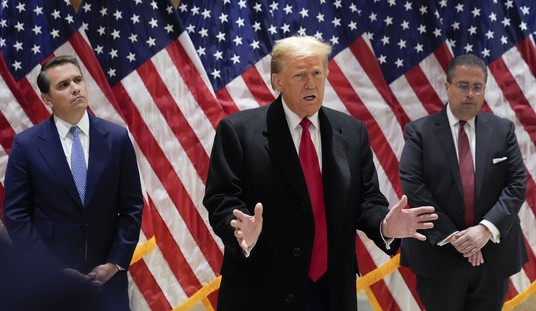This year the GOP has nominated more female candidates than in any previous election cycle. The number of GOP women running for U.S. House or Senate seats has doubled over the past two years. In California, Republicans nominated Carly Fiorina to run for Senate and Meg Whitman to run for governor. In New Mexico, Sussana Martinez was nominated by the Republicans to run for governor. Linda McMahon, who formerly headed World Wrestling Entertainment, is the GOP Senate nominee in Connecticut. In Nevada, former state assemblywoman Sharron Angle was nominated by the Republicans to run against the Liberal Democratic standard bearer and Senate Majority Leader Harry Reid. An unwavering conservative, Angle seeks to cut federal waste by eliminating the Departments of Energy and Education. A recent Rasmussen poll put her in a dead heat with Reid by a 50 to 49 margin. In South Carolina, Nikki Haley won the primary run-off and now faces Democrat Vincent Sheheen in the November election.
Of course the conservative queen-maker and Tea Party standard bearer was Sarah Palin. Two of the recent primaries’ biggest winners, Fiorina and Nikki Haley, were endorsed by Palin. This past week, Palin threw her support behind three more female GOP candidates, whom she called “liberty-loving Mama Grizzlies.” For the first time in history, the conservative movement and the Republic Party are headlined by women rather than middle aged white men.
This marks quite a change. Since the 1960’s civil right movements, American woman tended to sympathize with the liberal policies of the Democratic Party and identify themselves as Democrats; 41% of American woman identify themselves as Democrats compared to 25% who identify themselves as Republicans. The Democratic Party platform promotes equal social and economic outcomes with an emphasis on woman’s rights and liberal social policies. These policies are designed to appeal to the disenfranchised members of society, which formerly included most women. Furthermore, women played a prominent role in the liberal wing of the Democratic Party from Bela Abzug to Nancy Pelsoi.
Now, the GOP is filling its ranks with women, in part because they are symbols of outsiders. Is this what Palin has referred to as “an emerging, conservative, feminist agenda"? It may be a bit too early to discern trends. But there is no doubt that Palin’s success owned up new opportunities for women in the GOP. Whereas the party traditionally excluded women, it is now embracing females as symbols of an alternative to the male-dominated status quo in the capital. As the party’s base moves increasingly from its born-again roots, a unique brand of feminism seems to be emerging on the right.
Interestingly, this new breed of female Republicans don’t seem to be emphasizing women's issues. Fiscal conservatism—not gender—is the central issue in their campaigns. This seems to mark a new role for women in politics. Rather than leading with reproductive rights, female Republicans are emphasizing ideas. Or, as Kellyanne Conway, a Republican pollster, observed, “[T]he political establishment has been insulting women for decades by presuming that all women in politics are about is abortion, that we can't do the math, we don't understand tax policy." It turns out, she adds, that "we can do the math and girl talk 2010 is all about fiscal issues."
Recommended
The implications are profound. The fact that women are pushing into the GOP mainstream suggests seismic shifts in the party as well as women’s roles at work and at home. Clearly, the GOP is now as comfortable as the Democrats with the idea of women in high office. Not only could an increase in female representatives add kick to the Republican Party by disassociating it with its image as an old (Southern, white) boys club, but it could send a powerful message of diversity that could be crucial to capturing independent voters in several fall midterm races.
It may be early to predict a large scale exodus among women from the Democratic Party. But even a small shift in party loyalty could change the outcome of the next election. In the last presidential election, President Obama won the votes of 56% of women and 48% of men. If there is a seismic shift taking place among women voters and 10% of the independent and Democratic woman vote for Republican senate and congressional candidates, there could easily be a major change in the control of congress. If that shift continues through the 2012 election, it could even result in a roll back of some of the liberal social welfare policies of this administration and congress.
Williams is heard daily 7pm-8pm and 4am-5am on Sirius/XM Power 169


